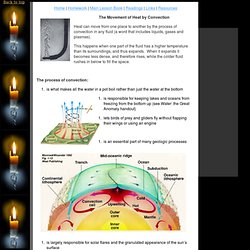

BBC Bitesize - KS3 Biology - Cells to systems - Revision 2. Metro UK. Introduction to Solutions. Introduction to Solutions Return to Solutions Menu A solution is a particular type of mixture.

Mixtures in chemistry are combinations of different substances where each substance retains its chemical properties. Generally, mixtures can be separated by non-chemical means such as filtration, heating, or centrifugation. A solution is a homogeneous mixture, but that's not the full definition. A solution is a homogeneous mixture where all particles exist as individual molecules or ions. By the way, there are homogeneous mixtures where the particle size is much larger than individual molecules.
A solution has two components: the solute and the solvent. The solvent is the substance in greater amount. It is usually a liquid, although it does not have to be. The solute is the substance in lesser amount. It is usually a solid, although it does not have to be. Ya know, I can just see that gleam in your eye. You finish the story. The word concentration refers to how much solute is dissolved. Chemistry Virtual Textbook. Acid-base chemistry can be extremely confusing, particularly when dealing with weak acids and bases.

This set of lessons presents an updated view of the Brønsted-Lowry theory that makes it easy to understand answers to common questions: What's the fundamental difference between a strong acid and a weak acid? Can acid A neutralize base B? Why are some salts acidic and others alkaline? SOLWS0.pdf. How it Works? The immune system has two parts – 'innate' and 'adaptive' Innate immunity The 'innate' (meaning: "present from birth") part of the immune system is so-called because it has a number of set strategies for recognising and dealing with certain kinds of infection, without needing to be "trained" to identify them.

This generally involves certain immune cells "sniffing-out" germs, via signs in the bloodstream, following the trail to the site of infection, and neutralising the invaders with special chemicals before swallowing them (a process known as 'phagocytosis'). Such cells are generally called white blood cells – (but specifically known as 'macrophages' and 'neutrophils'). This approach is very effective for many infections, but certain germs have developed ways of avoiding detection. Adaptive immunity The other part of the immune response is called the 'adaptive' immune system. Psychology, Behavior & Sexuality. Viruses: Nuts and Bolts of a Bacteriophage. A virus is a nonliving particle that depends on a host to reproduce.

There are different types of viruses, but all consist of a capsid, an outer protein coat, and some genetic material. Some viruses contain DNA and others RNA. In this activity you will build a simple model of a bacteriophage, a virus that infects bacteria. Materials Small bolt Two nuts One washer Six small pieces of pipe cleaners Activity Use the materials provided to build a bacteriophage model, referring to the illustration in Figure 9.2 as needed for guidance. Follow-Up Questions What did you use for the capsid of the virus? Answers Answers will vary. Extension Viruses are generally classified according to their DNA or RNA content. From The Science Teacher's Activity-A-Day. Nationalencyklopedin. PWHS: Thermodynamics: Convection. The Movement of Heat by Convection Heat can move from one place to another by the process of convection in any fluid (a word that includes liquids, gases and plasmas).

This happens when one part of the fluid has a higher temperature than its surroundings, and thus expands. When it expands it becomes less dense, and therefore rises, while the colder fluid rushes in below to fill the space. Semicolons. Today's topic is semicolons.

I get questions about semicolons a lot, so it's time to clear up some confusion. Use Semicolons to Separate Things and Add Variety Semicolons separate things. Most commonly, they separate two main clauses that are closely related to each other but that could stand on their own as sentences if you wanted them to.
Here's an example: "It was below zero; Squiggly wondered if he would freeze to death. " One reason you might choose to use a semicolon instead of a period is if you wanted to add variety to your sentence structure, for example, if you thought you had too many short, choppy sentences in a row. Plant Growth Factors: Plant Hormones. Thought Questions Explain the science behind the following gardening questions: 1.

A couple of times a year, I sheer my shrubs into nice rounded shapes. Now my shrubs have large woody stems with a lot of dead branches. Gardening - Gardening Guides - Techniques - Taking pelargonium cuttings. Krebs / citric acid cycle. Biology 101: Intro to Biology Course - Free Online Video Lessons. Biology 101: Intro to Biology Course - Free Online Video Lessons.